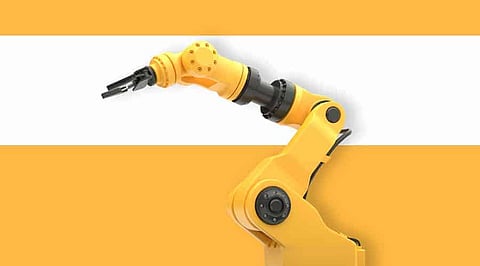

Experts in the automation sector all seem to agree that the future of collaborative robots is brightening by the day. The market is anticipated to develop rapidly over the next decade, with more expansion possible. Customers' needs are fast being met by robot producers. Engineers are using automation to solve some of their most difficult challenges. Collaborative robots are a unique breed of robotics because they can operate with and around people. Nearby human employees are kept safe by safety measures. Collaborative robots are excellent at taking over activities that have become boring, filthy, or hazardous, allowing humans to focus on more demanding and rewarding tasks.
Improvements have already been achieved that allow collaborative robots to operate with humans on the same activities. Most COBOTS do not require safety obstacles because of better sensors, cameras, and integrated vision. To accommodate for the presence of people, COBOTS can slow, halt, or adjust their actions. COBOTS have been connected to nearby machinery thanks to the Industrial Internet of Things (IIoT). Connectivity also brings machine visibility, data analytics, and enhanced predictive maintenance. Precision, flexibility, and efficiency have all improved as a result of this relationship. Collaborative robots have shown to be quite beneficial in the field of testing. COBOTS can stand in for human users by evaluating the appropriate performance of a gadget and completing rigorous input and output tests, thanks to advancements in camera, sound, and other sensor technology. Humans may focus on more complex work instead of spending time on these extremely repetitive activities.
In circumstances when a person must be in close contact with the robots, COBOTS are the most useful. Person-robot partnerships in which a human leads the robots to supervise the process, or even learns from the robots fall under this category. When it comes to COBOTS and 5G networks, there is a natural match. One of the most important aspects of COBOTS would be the quality-of-service needs, which will change over time and context – for example, in smart manufacturing.
A COBOT at a facility with no people does not require the same level of care as a COBOT near a human. As a result, in more safety-critical situations, the COBOT's requirement for a large quantity of signaling, high bandwidth, low latency, and quick decision-making skills through efficient processing is greater. As a consequence of 5G's efficient network slice allocation, which provides the required quality of service, resource usage in mobile networks is optimized. A lot of studies are being on right now to see how robots can replicate human emotions and choices. Artificial intelligence algorithms, on the other hand, have demonstrated that they are capable of discovering answers that are superior to those discovered by people.
When technology is shown to be reliable, it gets widely used. When individuals are unsure about a gadget or program, they tape microphones or laptop cameras, for example. When carmakers are unsure about the quality of the mobile network, they conduct important tasks on the vehicle rather than the cloud. Similarly, we would be hesitant to cooperate with industrial robots if we did not trust them. This is one of the most difficult aspects of COBOT development.
Furthermore, because COBOTS make numerous judgments in real-time, the search space might be rather vast. This necessitates traversals of huge knowledge graphs, which necessitates computing power, a dependable network, and innovative software structures. However, current advancements in technologies like linked data, parallel processing, edge computing, and distributed artificial Intelligence enable COBOTS to make more efficient decisions, resulting in more reliable and efficient execution.
Because companies must build use cases for COBOTS, massive deployments of any new technology are a difficulty. Traditionally, all robotics automation has been configured and optimized during the design process. It has been modified at run-time in a data-driven way in the best-case scenario. Process developers may use COBOTS to educate them on how to execute jobs and have them actively evolve in real-time, allowing for artificial intelligence advancements. The technology exists, but to achieve huge deployments at scale, use cases must be created at scale.
Insufficient technological maturity is a barrier to the market deployment of COBOTS, which is a difficulty. Hardware design, sensors and actuators, efficient information processing, video processing, planning, and a variety of areas from artificial intelligence landscapes are all included in COBOT technology, as well as technologies that assure the solution's safety, predictability, and security.
Robots have long been thought to be difficult to program. COBOTS, on the other hand, shattered the norm with its simple teaching pendants. Many people believe that the process of simplicity will continue. Robot operators may be able to develop sophisticated programs using simple smartphone apps. Manufacturers expect to create a COBOT that can be programmed by someone with little or no knowledge shortly. Collaborative robots may someday be able to conduct unlimited motions they've figured out on their own because of their always-on link to Big Data and artificial intelligence. Their viability in less organized production contexts will be boosted even more by this innovation.
Join our WhatsApp Channel to get the latest news, exclusives and videos on WhatsApp
_____________
Disclaimer: Analytics Insight does not provide financial advice or guidance. Also note that the cryptocurrencies mentioned/listed on the website could potentially be scams, i.e. designed to induce you to invest financial resources that may be lost forever and not be recoverable once investments are made. You are responsible for conducting your own research (DYOR) before making any investments. Read more here.
